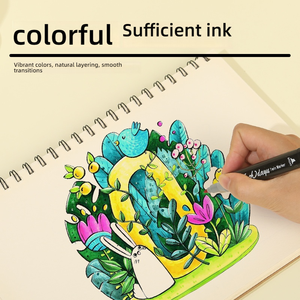Introduction to Painting Drawing Tools
Painting drawing tools are essential instruments used by artists, designers, and hobbyists to create captivating visuals and illustrations. These tools vary widely, ranging from traditional brushes and pencils to innovative digital styluses. Each type serves a specific purpose and can significantly enhance the creative process. Understanding the various painting drawing tools available is crucial for achieving desired artistic outcomes.
Types of Painting Drawing Tools
There are several distinct categories of painting drawing tools, each tailored to different applications and artistic styles:
- Brushes: These are available in multiple shapes and sizes, including round, flat, and fan brushes, suitable for different painting techniques.
- Pencils: Graphite, colored, and charcoal pencils allow for fine detailing and shading, providing versatility in drawing.
- Inks: Various types of ink pens, including gel and fountain pens, are perfect for precise lines and flat washes.
- Pastels: Oil and chalk pastels offer a vibrant alternative for creating soft-edge drawings and paintings.
- Digital Stylus: Used with tablets and digital applications, these tools allow for a modern approach to painting and drawing.
Function, Feature, and Design of Painting Drawing Tools
Each painting drawing tool is designed with specific functions that cater to the needs of artists:
- Functionality: Tools like brushes can be used for strokes of varying thickness, while pencils can create fine lines and intricate details.
- Ergonomic Design: Many painting tools feature comfortable grips and balanced weights, which reduce fatigue during extended use.
- Durability: High-quality materials ensure longevity and reliable performance, allowing artists to work without interruption.
- Versatility: Most tools can work on multiple surfaces, from canvas to paper, increasing their usability in various artistic endeavors.
Applications of Painting Drawing Tools
The applications of painting drawing tools extend across various fields:
- Artistic Expression: Professionals and amateurs alike utilize these tools to express creativity in fine art, illustrations, and mixed media.
- Design and Illustrations: Designers use specialized drawing tools for product sketches, concepts, and visual marketing materials.
- Education: Schools and art institutions incorporate these tools into curriculums to foster artistic skills in students.
- Crafting and DIY Projects: Hobbyists employ a range of painting and drawing tools for home décor, scrapbooking, and other creative projects.
Advantages of Using Quality Painting Drawing Tools
Opting for high-quality painting drawing tools comes with numerous advantages:
- Enhanced Performance: Quality tools provide better color application, smoother lines, and greater control, leading to superior artwork.
- Consistency: Reliable tools yield consistent results, allowing artists to predict outcomes and refine their techniques.
- Increased Inspiration: Utilizing well-crafted tools can spark creativity, encouraging artists to explore new ideas and techniques.
- Cost-Effectiveness: While high-quality tools may have a higher upfront cost, their durability and effectiveness can lead to savings over time, as they need less frequent replacement.





















































